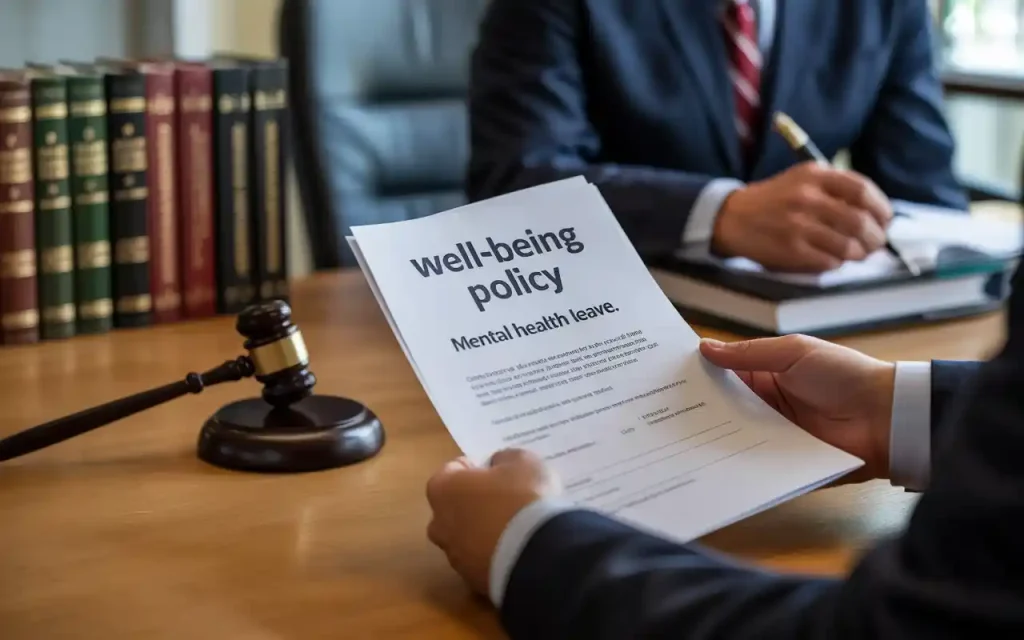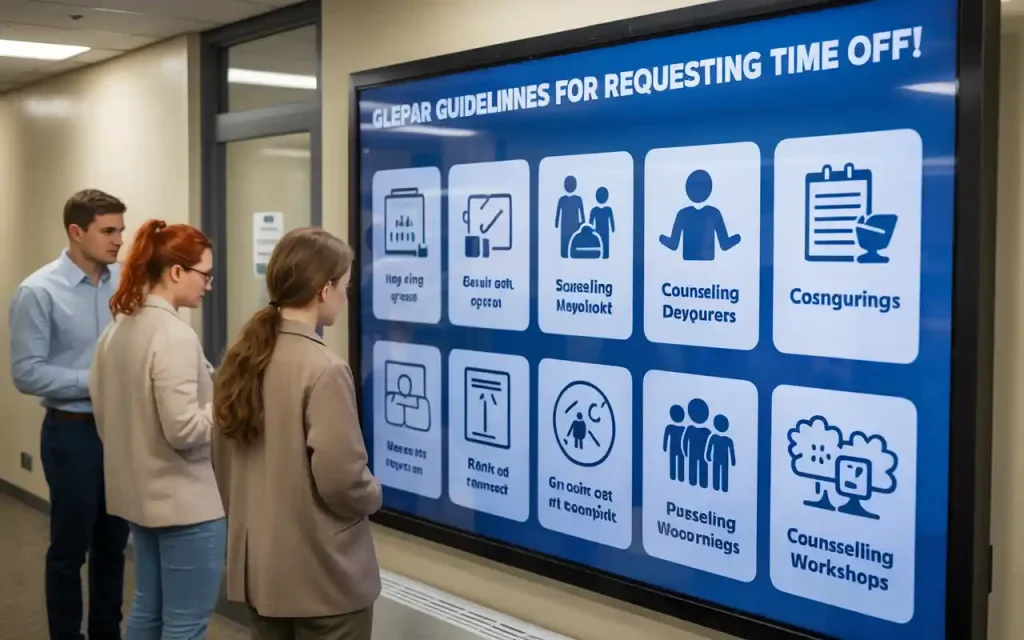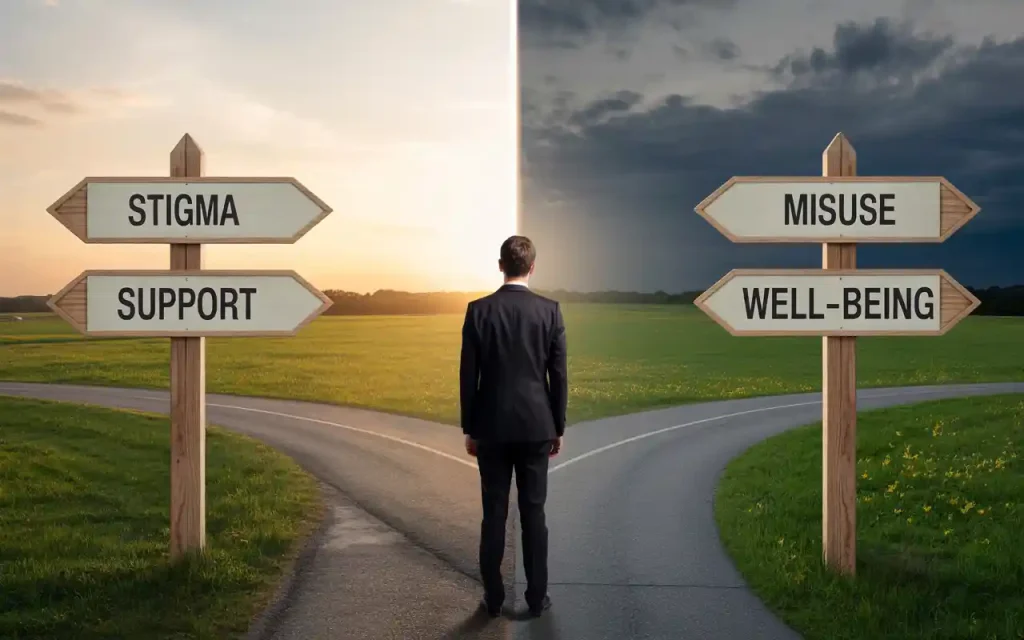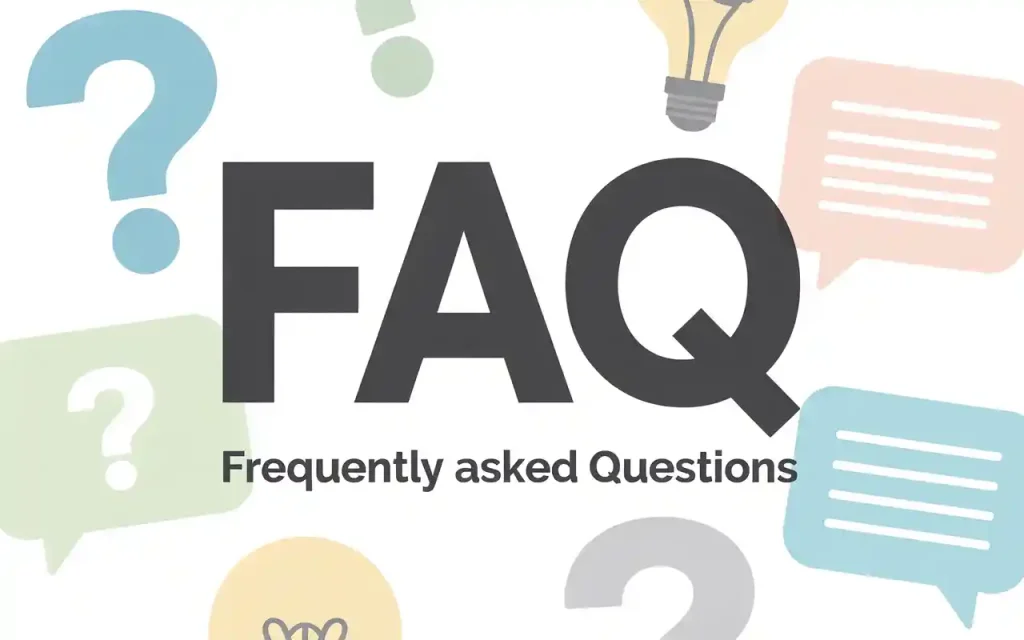Mental Health Days: The New Sick Leave Revolution

INTRODUCTION
Taking time off for emotional well-being is changing how we view sick leave. In today’s fast-paced world, the demands of work and daily life can be overwhelming, leading to increased stress, anxiety, and burnout for many people. The modern workplace is more competitive and connected than ever, with employees often expected to be available around the clock. This constant pressure can take a toll on both mental and physical health, making it essential to recognize the importance of rest and recovery.
Mental health days have emerged as a powerful response to these challenges. Unlike traditional sick leave, which is typically reserved for physical illness, these days are specifically intended to help individuals recharge, manage stress, and address emotional needs. They offer a much-needed pause from the relentless pace of work, allowing people to step back, reflect, and return with renewed energy and focus.
The concept of mental health days is not entirely new—many employees have quietly taken time off for mental well-being for years, often citing physical symptoms to avoid stigma. However, as awareness grows and conversations about mental health become more open, organizations are increasingly formalizing these days as part of their wellness policies. This shift reflects a broader understanding that mental health is just as vital as physical health for overall well-being and productivity.
Research shows that supporting mental health in the workplace leads to numerous benefits, including improved morale, higher engagement, and greater creativity. When employees feel valued and supported, they are more likely to be productive, innovative, and loyal to their organizations. By normalizing mental health days, companies and schools are taking an important step toward creating healthier, more compassionate environments for everyone
Understanding the Change

What Are These Days Off?
These are days away from work or school to care for your emotional and mental state. Just like you take a sick day for a fever, you can take a day off when you feel stressed, anxious, or overwhelmed. They are recognized as a legitimate reason for absence in many modern workplaces and schools.
Key Features:
- Used for stress, anxiety, depression, or emotional exhaustion
- May be planned in advance or taken spontaneously
- Often included in company wellness programs or school policies
- Help normalize conversations about emotional health
| Feature | Description |
|---|---|
| Purpose | Address emotional/mental well-being |
| Who can use | Employees, students, anyone needing a break |
| Typical frequency | 2–5 days per year (varies by policy) |
| How to request | Through HR, manager, or school administration |
| Paid or unpaid | Depends on employer or school policy |
Why Are They Important?
- Prevent Burnout: Regular breaks help avoid chronic stress and exhaustion.
- Boost Productivity: Employees and students return refreshed, leading to better performance.
- Support Well-Being: Encourages a healthy work-life balance.
- Reduce Stigma: Normalizes conversations about emotional health.
| Importance Area | Impact Example |
|---|---|
| Burnout Prevention | Reduces risk of long-term absenteeism |
| Productivity | 22% increase in team productivity reported |
| Well-Being | Improved sleep, mood, and resilience |
| Stigma Reduction | More open discussions, less shame |
Benefits for Employees and Students

Improved Well-Being
Taking time to recharge leads to a better mood, more energy, and a stronger ability to handle challenges. Employees and students who use these days report feeling more satisfied and less overwhelmed.
Examples of Well-Being Benefits:
- Improved sleep quality
- Reduced anxiety and irritability
- Enhanced focus and memory
- Greater resilience to daily stressors
Reduced Stigma
When organizations offer these days, they show that emotional health is important. This helps reduce shame or fear about needing time off for personal reasons. Open policies encourage people to seek help early.
How Stigma is Reduced:
- Awareness campaigns
- Leadership sharing personal stories
- Anonymous support channels
Higher Productivity
Rested employees and students work better. These days help prevent mistakes, improve focus, and increase creativity. Teams with access to these days often outperform those without.
Productivity Gains:
- Fewer errors and accidents
- Faster project completion
- More innovative problem-solving
Better Relationships
Time off for well-being can improve communication and teamwork, as people return with a clearer mind and more patience. This leads to a more positive and collaborative environment.
Relationship Improvements:
- Reduced workplace or classroom conflicts
- Increased empathy among colleagues or peers
- Stronger sense of community
| Benefit Area | Employee Impact | Student Impact |
|---|---|---|
| Well-being | Less stress, better health | Improved academic performance |
| Productivity | More focus, fewer errors | Better concentration, creativity |
| Relationships | Stronger teams | Healthier peer interactions |
| Stigma Reduction | More open culture | Easier to seek help |
Benefits for Employers and Schools

- Lower Absenteeism: Employees and students are less likely to take extended leave.
- Reduced Turnover: Staff and students are more likely to stay with supportive organizations.
- Higher Morale: A caring culture boosts engagement and loyalty.
- Enhanced Reputation: Organizations known for supporting well-being attract top talent.
- Better Performance: Teams and classes are more productive and creative.
| Employer/School Benefit | Description |
|---|---|
| Absenteeism | Fewer long-term absences |
| Turnover | 25% drop in turnover at Salesforce |
| Morale | Higher engagement and satisfaction |
| Reputation | Attracts and retains top talent |
| Performance | 22% productivity increase in some teams |
Legal Rights and Policies
Legal Rights

- In many countries, there is no specific legal right to these days, but emotional health is covered under general sick leave laws.
- Some conditions can be considered a disability, requiring employers to make reasonable adjustments.
- Laws vary by country and region; some places are beginning to recognize these days as a legal right.
| Country/Region | Legal Status of Mental Health Days | Notes |
|---|---|---|
| United States | Varies by state; some explicit | 12 states allow school mental health days |
| United Kingdom | Covered under sick leave laws | Mental health is a valid reason |
| Australia | Included in personal/carer’s leave | Employers encouraged to support |
| Nigeria | Not specifically recognized | Covered under general sick leave |
| Canada | Some provinces explicit | Growing trend in workplaces |
Workplace and School Policies

- Clear Rules: How to request these days, how many are allowed, and whether they are paid or unpaid.
- Fair Use: Policies should ensure all have equal access.
- Support Programs: Employee assistance programs, counseling, and workshops.
- Confidentiality: Protecting privacy when requesting time off.
| Policy Element | Description |
|---|---|
| Number of days | 2–5 per year typical |
| Request process | HR, manager, or school admin |
| Paid or unpaid | Varies by organization |
| Support resources | EAP, counseling, workshops |
| Confidentiality | Requests handled privately |
How Employers and Schools Can Support

Clear Policies
Employers and schools should create clear rules about these days, including how to request them and how many are allowed. Policies should be easy to understand and accessible to all.
Open Communication
Talking about emotional well-being should be normal. Leaders can encourage staff and students to speak up if they need a break. Regular check-ins and open-door policies help build trust.
Training for Managers and Educators
Managers and educators should learn how to spot signs of stress and support their teams or students. Training can include:
- Recognizing burnout symptoms
- Having supportive conversations
- Referring to resources
Support Programs
Offer employee assistance programs (EAPs), stress management workshops, and access to care. These programs can provide counseling, financial advice, and crisis support.
Additional Support Ideas:
- Mindfulness and meditation sessions
- Flexible work or school hours
- On-site wellness activities
| Support Strategy | Example Implementation |
|---|---|
| Flexible arrangements | Remote work, flexible hours, study breaks |
| Training | Manager/teacher workshops on mental health |
| EAP/Support | 24/7 counseling, peer support, workshops |
| Wellness activities | Yoga, mindfulness, group activities |
Tips for Employees and Students

- Listen to your body and mind: If you feel overwhelmed, consider taking a day off.
- Plan your time off: Use your day to rest, relax, or do something you enjoy.
- Talk to your employer or teacher: Let them know if you need support or more flexible options.
- Use the time wisely: Activities like walking, reading, or meditating can help you recharge.
- Set boundaries: Avoid checking work or school emails during your day off.
- Reflect on your needs: Use the time to identify stressors and plan for ongoing self-care.
| Tip | Benefit |
|---|---|
| Rest and recharge | Improved mood, energy, and focus |
| Healthy activities | Reduced stress, better health |
| Communication | More support, less isolation |
| Boundaries | Prevents burnout, maintains work-life balance |
Global Perspective and Statistics

- About 15% of working-age adults have a mental disorder.
- Globally, 12 billion working days are lost each year to depression and anxiety, costing $1 trillion in lost productivity.
- Around 20% of the world’s children and adolescents have mental health problems.
- Over 75% of people in low- and middle-income countries receive no treatment for mental health disorders.
- 4 in 5 people show signs of a mental health condition in recent screenings.
- 62% of employees report increased productivity after taking a mental health day.
- 60% of US companies offered mental health days in 2023.
Case Studies: Real-World Examples
| Organization | Mental Health Support Strategies | Results/Impact |
|---|---|---|
| Lululemon | Mindfulness programs, flexible work, mental health specialists | Improved well-being, higher engagement |
| American Express | 24/7 EAP counseling, mental health training for leaders | Stronger support culture, reduced stigma |
| Unilever | Global mental health program, stress management workshops, screenings, flexible work | Better stress management, improved resilience |
| Patagonia | EAP, counseling, education, Take Back Days for community service and personal growth | Empowered employees, positive work environment |
| Asana | Designated mental health days, peer coaching, proactive support | Higher morale, reduced burnout |
| Salesforce | Additional mental health days, regular assessments, open feedback culture | 25% drop in turnover, 22% productivity increase1 |
Challenges and Criticisms

Stigma and Misunderstanding
- Many people still feel ashamed to take these days, fearing they will be seen as weak.
- Stigma can delay treatment and worsen problems.
- Some cultures and industries are less accepting of emotional health needs.
Addressing Stigma:
- Education and awareness campaigns
- Leadership sharing personal experiences
- Anonymous feedback channels
Potential for Misuse
- Some worry that these days could be misused as extra vacation, so clear policies are needed.
- Tracking usage and providing guidance can help prevent abuse.
Not a Complete Solution
- Days off alone do not fix workplace or school stress or poor management. They should be part of a bigger plan to support well-being.
- Ongoing support, healthy environments, and access to care are essential.
| Challenge | Description | Solution/Response |
|---|---|---|
| Stigma | Fear of being seen as weak | Awareness, leadership, open dialogue |
| Misuse | Used as extra vacation | Clear policies, tracking, guidance |
| Incomplete solution | Not enough alone | Combine with broader support programs |
How to Make Them Work

For Employers and Schools
- Create a supportive culture: Encourage open conversations and respect for emotional health.
- Train managers and staff: Provide education on recognizing and addressing stress.
- Offer flexible options: Remote work, flexible hours, study breaks.
- Regularly review and improve policies: Gather feedback and adapt to changing needs.
- Promote work-life balance: Encourage breaks, vacations, and reasonable workloads.
For Employees and Students
- Use these days before reaching burnout: Don’t wait until you’re overwhelmed.
- Combine days off with healthy habits and support: Exercise, nutrition, and social connections.
- Seek help if you need ongoing support: Reach out to professionals or support groups.
- Advocate for yourself: Communicate your needs to your employer or school.
| Action Step | For Employers/Schools | For Employees/Students |
|---|---|---|
| Supportive culture | Open dialogue, leadership modeling | Speak up, seek help |
| Training | Workshops, resources | Learn self-care, stress management |
| Flexibility | Remote work, flexible hours | Use time for rest and healthy habits |
| Policy review | Regular feedback, adapt policies | Give feedback, suggest improvements |
Quotes
- “Taking time off for emotional well-being is transforming how we view sick leave.”
- “Caring for your mind is just as important as caring for your body.”
- “Regular breaks help avoid chronic stress and exhaustion.”
- “Open policies encourage employees to seek help early.”
- “Rested employees work better. These days help prevent mistakes, improve focus, and increase creativity.”
- “Organizations known for supporting well-being attract top talent.”
- “Days off alone do not fix workplace or school stress or poor management. They should be part of a bigger plan to support well-being.”
- “By using mental health days, both individuals and organizations can create a happier, healthier, and more productive environment.”
Highlighted Points
- Mental health days are now recognized as a legitimate reason for absence in many workplaces and schools.
- They help prevent burnout, boost productivity, and support overall well-being.
- Open communication and clear policies are key to reducing stigma and encouraging use.
- Employers and schools benefit from lower absenteeism, reduced turnover, higher morale, and better performance.
- Legal rights and policies vary by country and organization, but the trend is growing worldwide.
- Support programs like Employee Assistance Programs (EAPs), counseling, and wellness workshops enhance the effectiveness of these days.
- Challenges include lingering stigma, potential misuse, and the need for broader support beyond just days off.
- Successful implementation requires a supportive culture, training, flexibility, and ongoing policy review.
- Case studies from top companies show measurable improvements in well-being, retention, and productivity.
- Mental health days are part of a larger movement toward prioritizing emotional well-being in both work and education.
Frequently Asked Questions

Q: Are these days paid or unpaid?
A: This depends on company or school policy. Many organizations offer them as paid leave, while others may count them as part of general sick leave.
Q: How do I request a day off for well-being?
A: Follow your organization’s normal process for sick leave, or speak directly with your HR department, manager, or school administration.
Q: Can I be penalized for taking these days?
A: In most places, you cannot be penalized for taking legitimate sick leave, including for mental health. Always check your local laws and organization’s policies.
Q: What if my organization doesn’t offer them?
A: You can often use regular sick leave for emotional well-being if specific days are not offered. Consider advocating for policy changes if you feel these days are needed.
Conclusion
Taking time off for emotional well-being is transforming how we view sick leave. These days are a powerful way to support well-being at work and school. By using them, both individuals and organizations can create a happier, healthier, and more productive environment.




